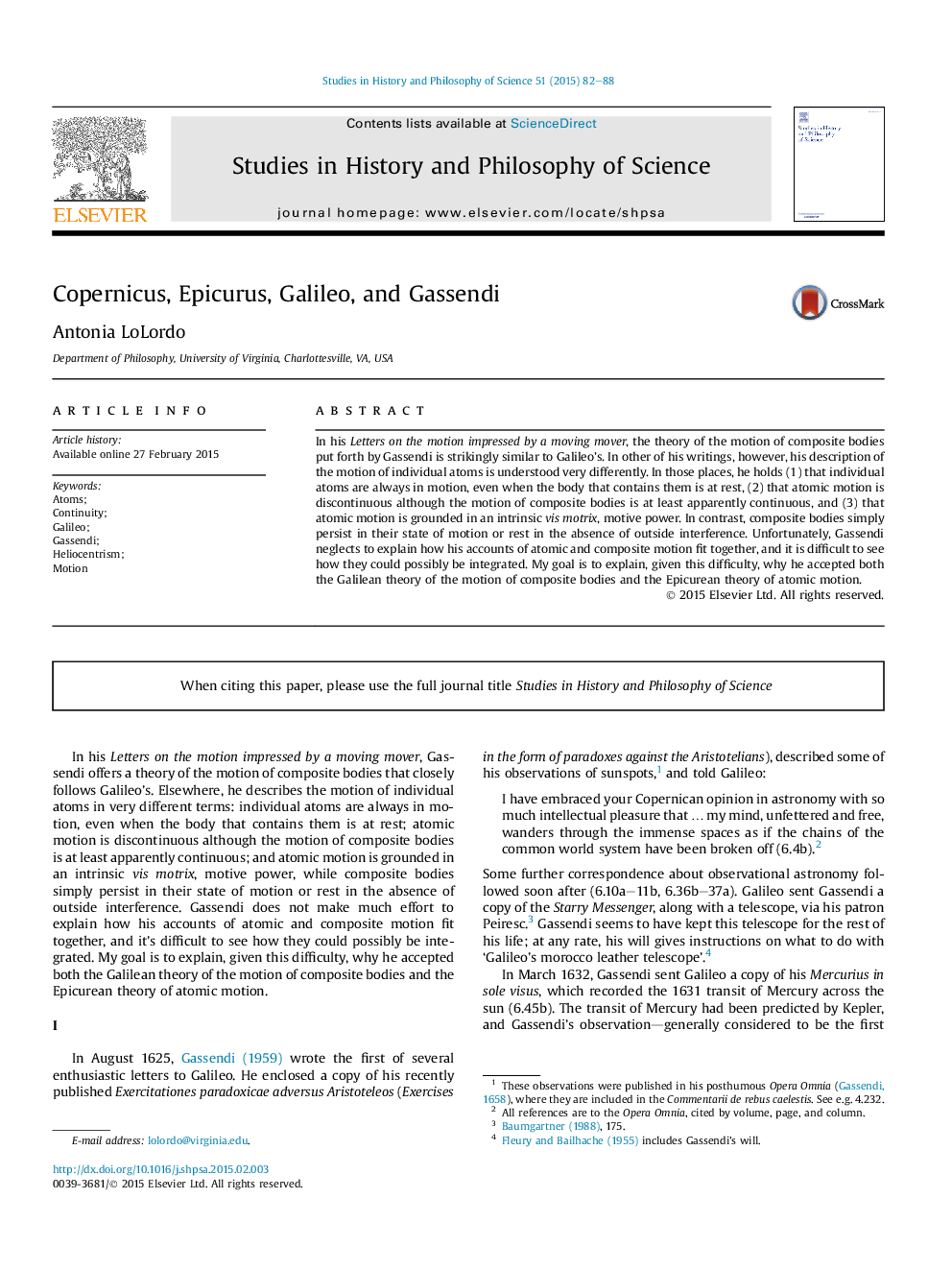| Article ID | Journal | Published Year | Pages | File Type |
|---|---|---|---|---|
| 1160486 | Studies in History and Philosophy of Science Part A | 2015 | 7 Pages |
Abstract
In his Letters on the motion impressed by a moving mover, the theory of the motion of composite bodies put forth by Gassendi is strikingly similar to Galileo's. In other of his writings, however, his description of the motion of individual atoms is understood very differently. In those places, he holds (1) that individual atoms are always in motion, even when the body that contains them is at rest, (2) that atomic motion is discontinuous although the motion of composite bodies is at least apparently continuous, and (3) that atomic motion is grounded in an intrinsic vis motrix, motive power. In contrast, composite bodies simply persist in their state of motion or rest in the absence of outside interference. Unfortunately, Gassendi neglects to explain how his accounts of atomic and composite motion fit together, and it is difficult to see how they could possibly be integrated. My goal is to explain, given this difficulty, why he accepted both the Galilean theory of the motion of composite bodies and the Epicurean theory of atomic motion.
Keywords
Related Topics
Social Sciences and Humanities
Arts and Humanities
History
Authors
Antonia LoLordo,
